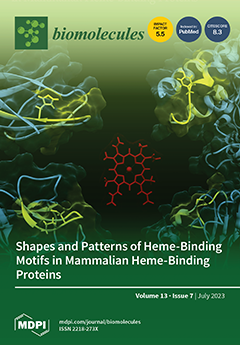Radiolabeled gastrin-releasing peptide receptor (GRPR) antagonists have shown great promise for the theranostics of prostate cancer; however, their suboptimal metabolic stability leaves room for improvements. It was recently shown that the replacement of Gly
11 with Sar
11 in the peptidic [D-Phe
6,Leu
13-NHEt,
des-Met
14]BBN(6–14) chain stabilized the [
99mTc]Tc-DB15 radiotracer against neprilysin (NEP). We herein present DOTAGA-PEG
2-(Sar
11)RM26 (AU-RM26-M1), after Gly
11 to Sar
11-replacement. The impact of this replacement on the metabolic stability and overall biological performance of [
111In]In-AU-RM26-M1 was studied using a head-to-head comparison with the unmodified reference [
111In]In-DOTAGA-PEG
2-RM26. In vitro, the cell uptake of [
111In]In-AU-RM26-M1 could be significantly reduced in the presence of a high-excess GRPR-blocker that demonstrated its specificity. The cell uptake of both radiolabeled GRPR antagonists increased with time and was superior for [
111In]In-AU-RM26-M1. The dissociation constant reflected strong affinities for GRPR (500 pM for [
111In]In-AU-RM26-M1). [
111In]In-AU-RM26-M1 showed significantly higher stability in peripheral mice blood at 5 min pi (88 ± 8% intact) than unmodified [
111In]In-DOTAGA-PEG
2-RM26 (69 ± 2% intact;
p < 0.0001). The administration of a NEP inhibitor had no significant impact on the Sar
11-compound (91 ± 2% intact;
p > 0.05). In vivo, [
111In]In-AU-RM26-M1 showed high and GRPR-mediated uptake in the PC-3 tumors (7.0 ± 0.7%IA/g vs. 0.9 ± 0.6%IA/g in blocked mice) and pancreas (2.2 ± 0.6%IA/g vs. 0.3 ± 0.2%IA/g in blocked mice) at 1 h pi, with rapid clearance from healthy tissues. The tumor uptake of [
111In]In-AU-RM26-M1 was higher than for [
111In]In-DOTAGA-PEG
2-RM26 (at 4 h pi, 5.7 ± 1.8%IA/g vs. 3 ± 1%IA/g), concordant with its higher stability. The implanted PC-3 tumors were visualized with high contrast in mice using [
111In]In-AU-RM26-M1 SPECT/CT. The Gly
11 to Sar
11-substitution stabilized [
111In]In-DOTAGA-PEG
2-(Sar
11)RM26 against NEP without negatively affecting other important biological features. These results support the further evaluation of AU-RM26-M1 for prostate cancer theranostics after labeling with clinically relevant radionuclides.
Full article






